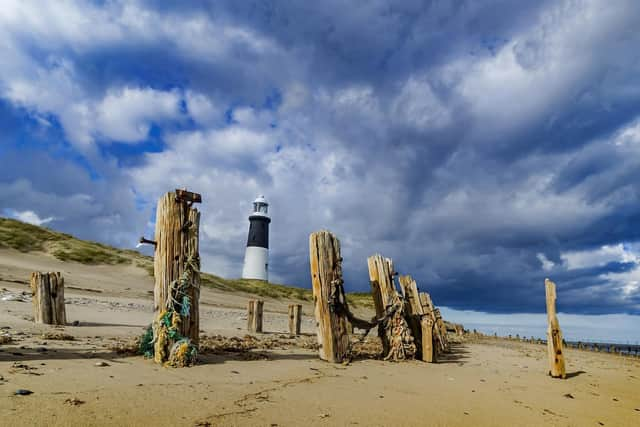Environment Agency head Sir James Bevan won't persuade me to move from the coast - David Behrens
Sir James Bevan was in Telford this week, almost as far inland as you can get, to tell delegates at something called the Flood and Coast Conference that in the future entire seaside communities would have to shift with the sands and relocate to somewhere safer and more arid.
This “inconvenient truth”, as he called it, was the consequence of erosion nibbling away at the cliffs of the East Riding and other parts of Britain. It was not part of his job, he said, to stem the tide of nature.
Advertisement
Hide AdAdvertisement
Hide AdHe had chosen his words carelessly, because if we have learnt anything about his agency in recent times, it is that the truth is inconvenient chiefly to Sir James himself.


This was most evident five months ago when a leaked email revealed the depths he was prepared to plumb in order to protect the organisation from its many critics. It would be a disciplinary offence, he warned his staff, to criticise or discredit the agency in the media or to disclose confidential information about its workings to anyone “not authorised to receive it”.
The gagging order was his attempt to shut down the parliamentary debates, demonstrations and petitions that followed revelations about the filthy state of the English rivers in the agency’s care.
The Salmon and Trout Conservation charity had reported that Sir James’s staff were failing not only to protect rivers but even to inspect them properly. The agency was falling down on every level, it said, echoing the conclusion of a Commons select committee 11 years earlier.
Advertisement
Hide AdAdvertisement
Hide AdIn the West Riding, the residents of Mytholmroyd already knew this. Their village was flooded in 2015, but four years later a gaping hole was left in the temporary defence barrier the agency was supposed to be overseeing – causing it to flood all over again.
The decent response to this would have been to resign and to return the knighthood they gave him in lieu of a gold watch. Instead, Sir James tried to plug the leaks in his organisation, rather than those in the flood barrier, by suppressing information that ought to have been in the public domain in the first place. It was the last recourse of a drowning manager in an ineffective organisation.
This week’s speech about coastal erosion further illustrated his lack of understanding about a natural phenomenon that is old news to everyone except him. But why should he understand? He’s not a scientist; he’s a career civil servant – a diplomat drafted in from the Foreign Office. There was little diplomacy in his speech, though, which relied on scare tactics to get its message across. As a result it risked damaging the fragile economy that will need to support rural and coastal communities for generations to come.
That is not to say that coastal erosion isn’t real and tangible. At the end of my lane, not far from Spurn Point, footpaths and fields that were walkable and harvestable last autumn are now in the sea. Next year the cliffs will retreat further. But half a mile inland, the property market is flourishing. Five new houses have been built and sold, and there’s planning permission for another. All will stand long after their present inhabitants have fallen.
Advertisement
Hide AdAdvertisement
Hide AdThey know as I do that we are on borrowed time, for one day the sea will indeed reclaim the peninsula, as it has been doing gradually for the last half-millennium. But it will take centuries more to wash over us, and in the meantime the cycle of life and of sowing and harvesting will go on.
When a future community does eventually retreat further inland, it will not be the first to have done so. Around 1850, Kilnsea, said to be the prettiest settlement in all Holderness, with its noble old church and jumble of thatched houses, was abandoned by its pragmatic residents for the new village that still stands a mile or so away.
Their stoicism – not the self-serving rhetoric of a Whitehall mandarin seeking to deflect attention from his department’s shortcomings – tells the real story of the Yorkshire coast.
It is a vital cog in the economic and agricultural infrastructure of an area the Government is supposed to be levelling up, not talking down. And if Sir James doubts that, perhaps he might care to ungag some of his staff for long enough to bring him here.